

It takes patience and dexterity to work with a tough fabric like canvas. But, whether you need to repair outdoor furniture, canvas backpacks, or boat sails, learning how to sew canvas the right way is a lifesaver skill you can master in a few steps so long as you have the right tools.
Thick fabrics just as canvas and jeans strain both you and your sewing tools and machines to the maximum. The fabric is tough to control, pierce, and hold together, which means the quality of your sewing could be affected.
Don’t worry about that, though, because sewing canvas is simple. Whether you intend to do it by hand or use a sewing machine, this is Sewing Canvas 101 to help you get started.
Sailors can teach us a thing or two about hand sewing canvas, after all, they often have to do it at sea to mend sails. Sewing canvas by hand is a tedious job, but it’s not as bad as it sounds. The most important thing is to have the right tools on hand including needles, sewing awls, and basting tape.
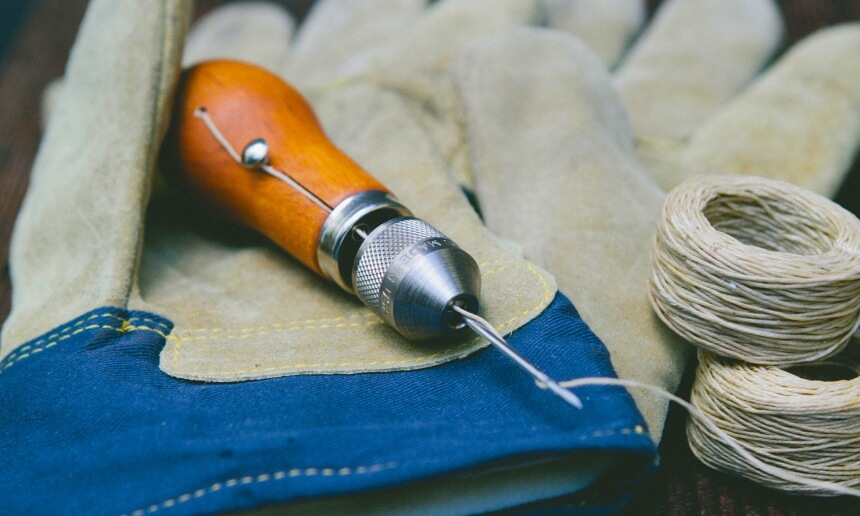
It’s common to use 18-inch needles or denim needles. That means size 90-100 Universal or Jeans needles, or sizes 22 and 24 depending on the mesh of your canvas.
There is a lot you can do with a pack of good reliable needles such as this 6-piece set of Tulip needles. While they are a bit more expensive than regular needles, our experts together with other users on online forums agree that these needles are amazingly sturdy, smooth, and versatile. They will literally improve the quality of your canvas sewing, embroidery, quilting, and applique work overnight.
If you are sewing a very heavy canvas or need to sew through multiple layers, you can use a handheld sewing awl instead such as the Speedy Stitcher. The Stitcher works great for canvas that is more than a full inch thick and comes with its own bobbin for thread control. You can also change needles as needed for different projects.
You need heavy-duty thread to sew canvas, but it shouldn’t mess with the meshwork on the canvas itself. Upholstery thread is one example of strong, appropriately thick thread that works great for sewing canvas by hand.
You can also use size 40 thread made from polyester, cotton, or cotton-wrapped polyester when sewing canvas by hand.
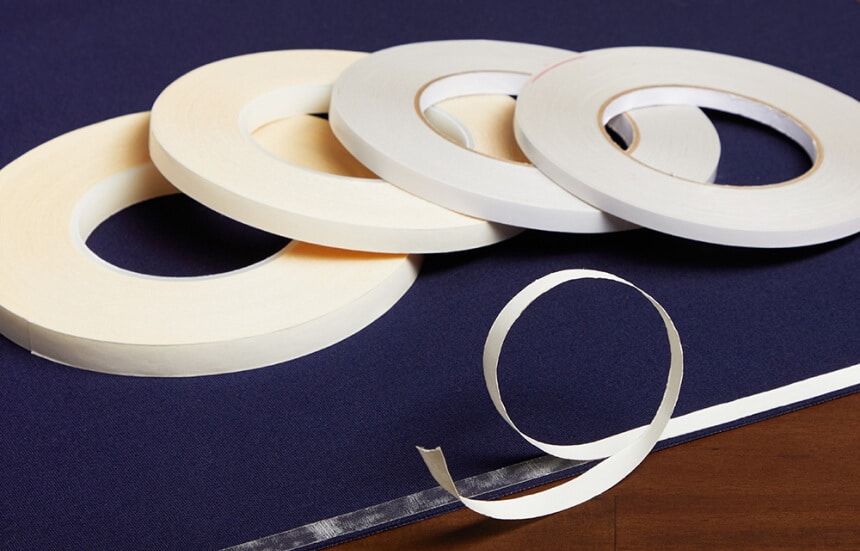
Soapstone or chalk is used for marking your canvas. It is preferable because it washes out easily with plain water and works best on canvas.
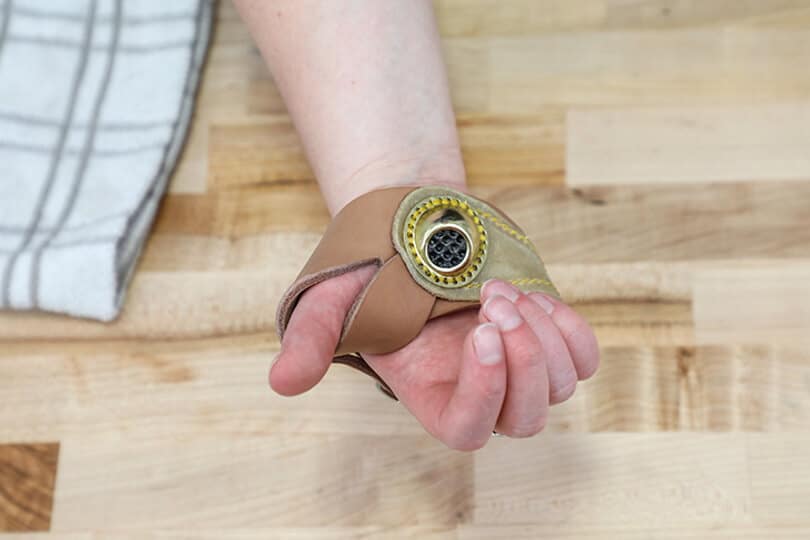
This is actually one of the ways to sew waxed canvas and other extra-thick fabrics. The sailmaker’s palm gives you the leverage you need to push the needle through the fabric and protects your hands from chafing.
Step 1. Cut the Canvas
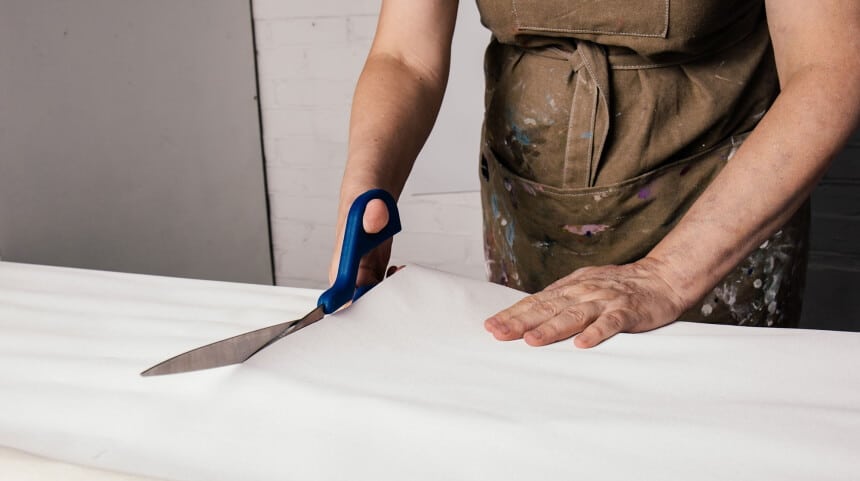
If you don’t want the edges to fray, you can also use a hot knife to cut the material. The heated edge seals the edge of the canvas fabric and makes a neat, secure edge. If the fabric is too thick, you’re better off cutting it one flap at a time.
Step 2. Sew the Canvas
Wearing your metal thimble or sailmaker’s palm, use your strong thread and needle to sew the fabric together. If the fabric is too thick to push the needle through, you can use a pair of jewelry pliers or round-nosed pliers to pull the needle through on the other side.
The most common stitch used to hand-sew canvas is the straight stitch at a length of 3.0 to 3.5. The longer length helps the machine move the fabric better and creates a smoother finish.
Step 3. Finish Your Seam
You can rely on a number of hems to finish your canvas project including:
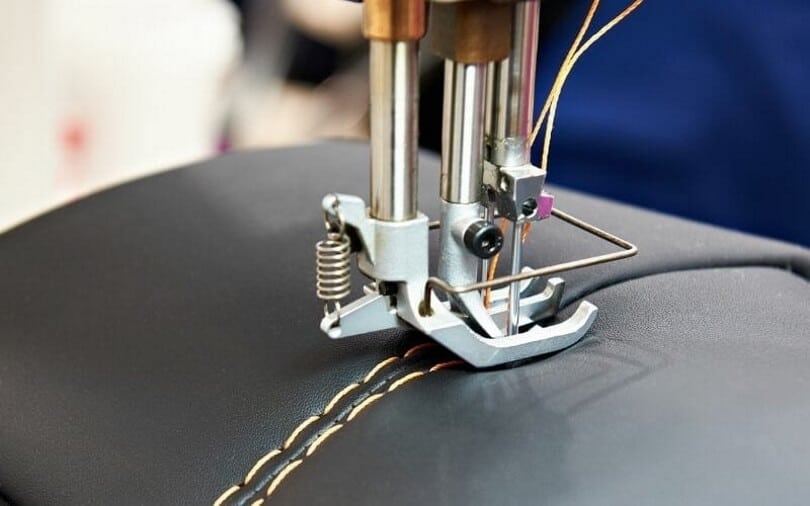
However, frequent use on canvas could damage the machine’s interior components, so you will need to get a heavy-duty sewing machine. You should also get a machine for sewing boat canvas and other outdoor fabrics.
Our experts unanimously recommend this Juki DDL-8700 Industrial Sewing Machine for its heavy-duty construction, versatility, and speed. It can manage up to 5,500 stitches a minute and accommodates needles sizes 9-18, and users simply love how quiet it is.
Once you have the right sewing machine, you will also need a set of sewing machine needles. It is critical to ensure that you get the sharpest needles in different kinds. If you need a little help finding the best sewing machine needles for canvas, you check out this review.
Step 1. Cut the Canvas

Use your soapstone pencil or chalk to mark the canvas, then secure one end while you cut along the other one. You can also use a hot gun if you have one available, but the type of seams you will be using makes it unnecessary to use one.
Step 2. Prepare Your Sewing Machine
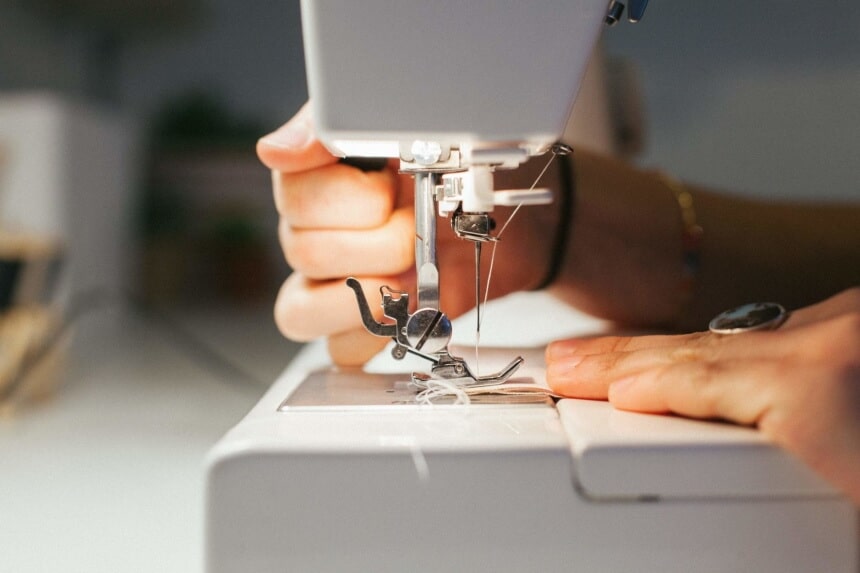
Step 3. Start Sewing
When sewing canvas, there are three seams that are given preference due to their simplicity and strength. These are the overlapping seam, semi-flat felled seam, and full flat-felled seam.
Whichever seam you choose will depend on the properties of the final product. Just remember to iron slowly, especially over bukly areas to avoid snapping the needle or thread. If you need to backstitch, be even more careful because sewing machines don’t like backstitching on canvas. You’re better off doing a reinforcing stitch instead.
FAQ
Can you sew canvas with a regular sewing machine?
Yes, you can use a regular sewing machine to sew canvas for short periods. However, the extra toughness and thickness of the fabric places your machine under unnecessary stress and can result in internal damage in your sewing machine.
What is the best sewing machine to sew canvas?
Any standard sewing machine should be able to sew canvas now and then, but not frequently. If you want to undertake a large canvas sewing project, you need a heavy-duty straight stitch machine with a walking foot. You can also opt for one of these sewing machines for leather which are well adapted to this kind of sewing job.
Which needle should I use to sew canvas?
Standard sewing needles will break and bend if you use them to sew tough canvas, Instead, you should use denim needles size 90/16 and above for the best results.
What weight of thread is best for canvas?
For such a heavy fabric, use size 40 polyester or cotton-wrapped polyester thread to sew canvas. You can also use wool or upholstery thread to sew canvas, but you have to make sure that your needle has a hole big enough to accommodate the heavy thread.
What tension should I use for sewing canvas?
A lighter tension is best for sewing canvas. However, be sure to test it out on a scrap of fabric first before moving on to the workpiece. For light canvas, however, a top thread tension of 4.5 should still be fine.
What is the best thread to use for outdoor fabric?
If you are looking to sew outdoor canvas, Sunbrella, marine canvas, or other fabric exposed to the elements, polyester thread is the best option. It has low shrinkage and stretch, resists decay, and even UV rays. However, it should be exposed to sunlight for long periods as it can lose some of its strength.
Can you embroider on canvas?
Yes, stitching embroidery on canvas is easy since the material is already stretched. Also the large mesh of canvas fabric makes it easy for a stitching needle to pass through.
What do you need to sew canvas?
You need special supplies to sew canvas successfully. That includes a heavy-duty needle size 90 Universal and above, heavy-duty thread, basting tape, and some patience.
Can I sew canvas by hand?
Yes, it is quite easy to sew canvas by hand. All you need is to have the right needle, yarn, a thimble or sailmaker’s palm, among others. If your fabric is extra thick or tough, a handheld sewing awl such as the Quick Stitcher will be a better option.
What seam should I use to sew canvas?
There are three seams commonly used when sewing canvas due to their strength and use. These are the overlapping seam, the semi-flat felled seam, and the full flat-felled seam. Each of these has different properties that you can leverage to ensure that your project fits your needs.
Sewing canvas isn’t really a tough skill to master, but it does require lots of patience and a few pieces of special equipment. You can opt to sew by hand or better still, use a heavy-duty straight-stitch machine. The important thing to note is that you should always use the appropriate needle and thread for best results.
Once you have mastered the basics of how to sew canvas, you can do your own mending of outdoor furniture, tents, backpacks, sails (if you own a sailboat), or even be creative and make your own canvas items. If you like sewing canvas enough that it becomes a habit, be sure to invest in the best equipment to make your job easier.